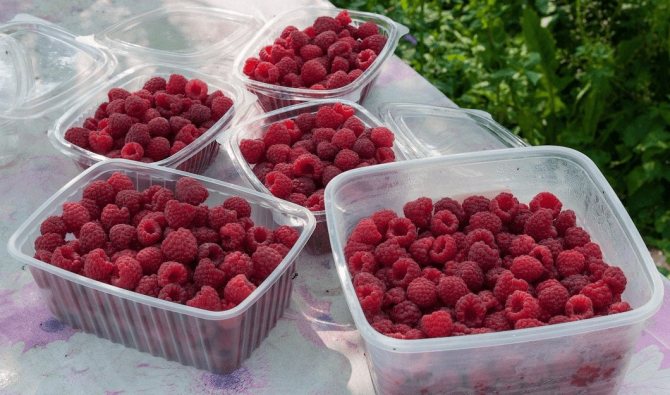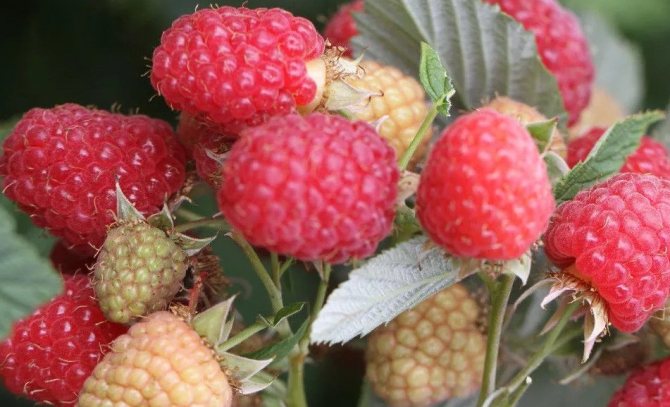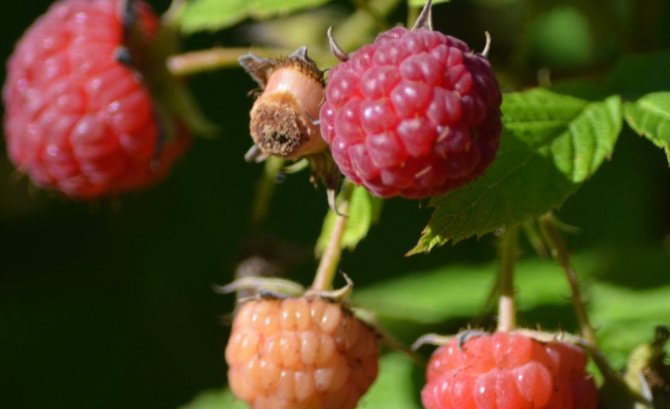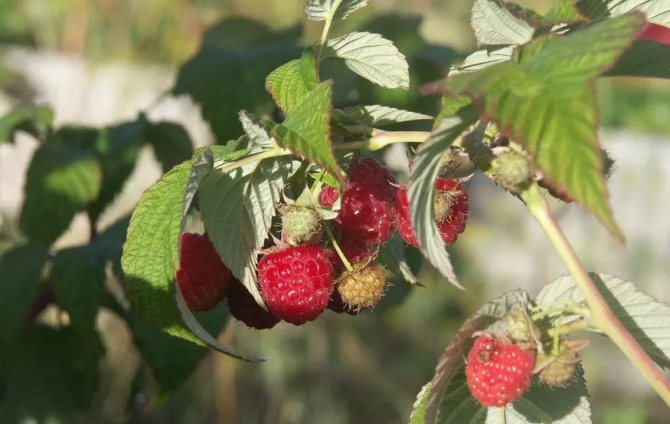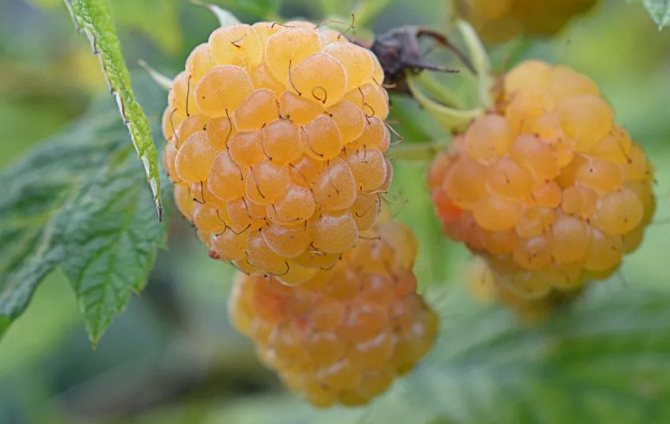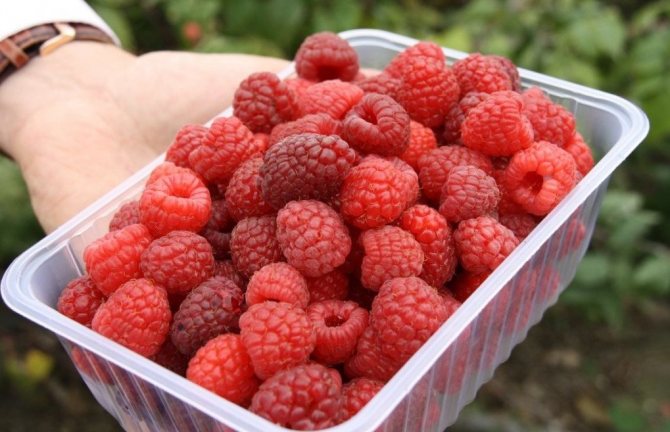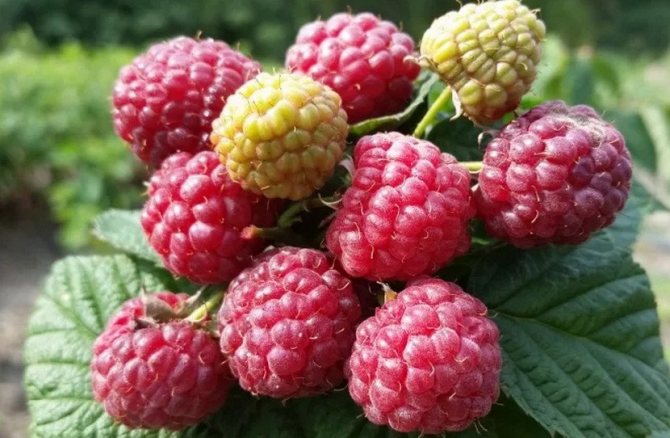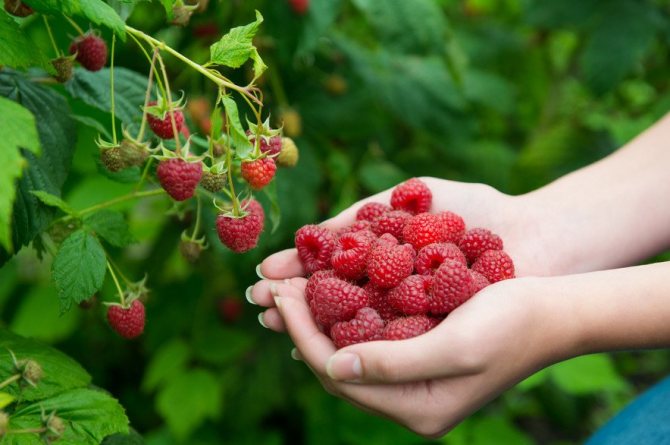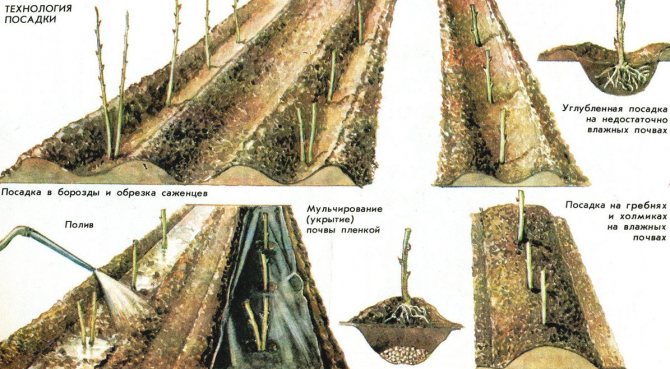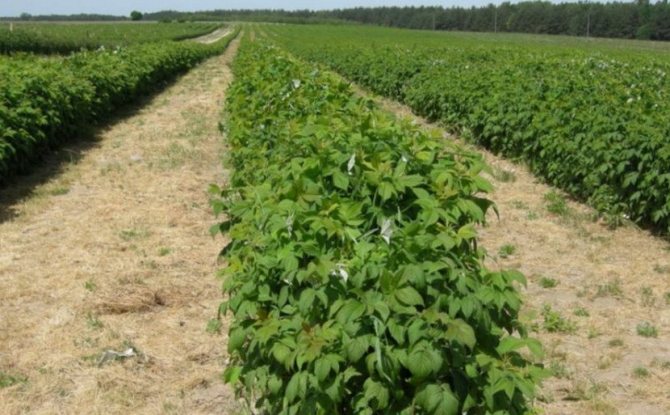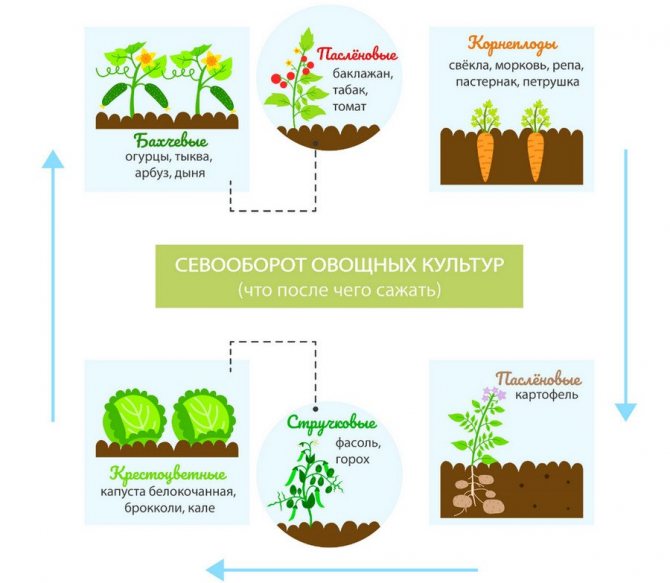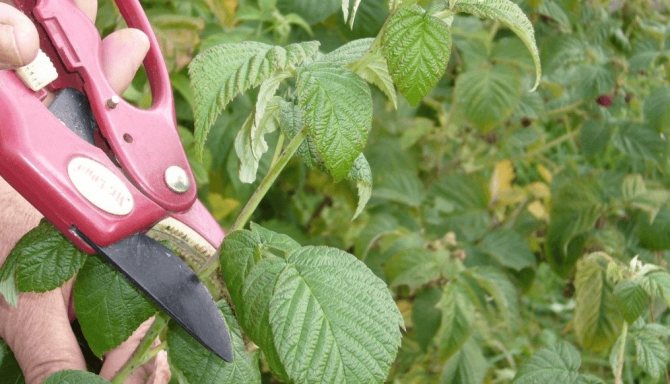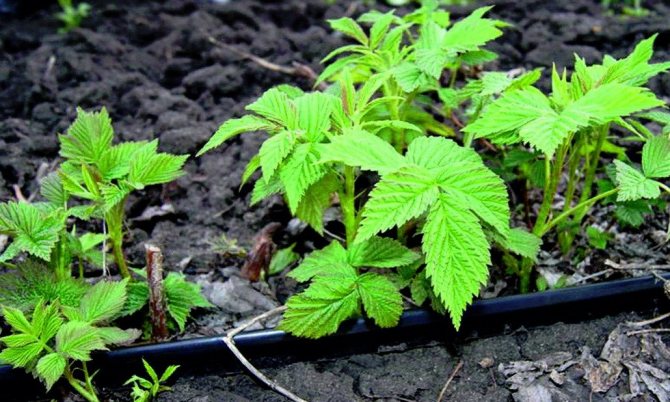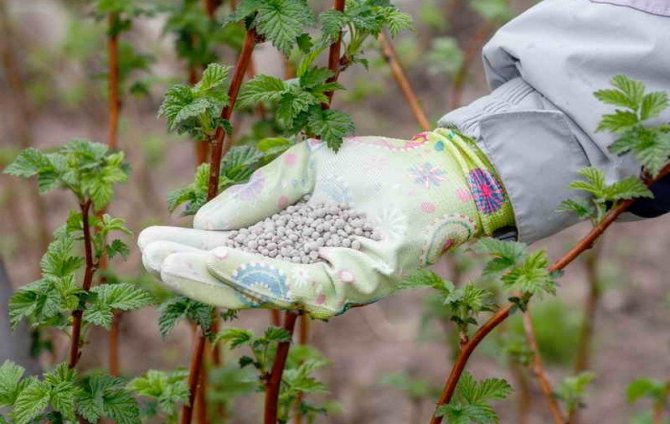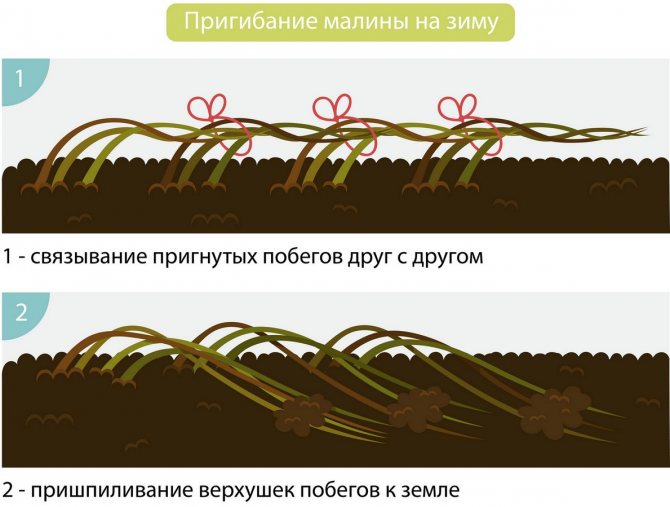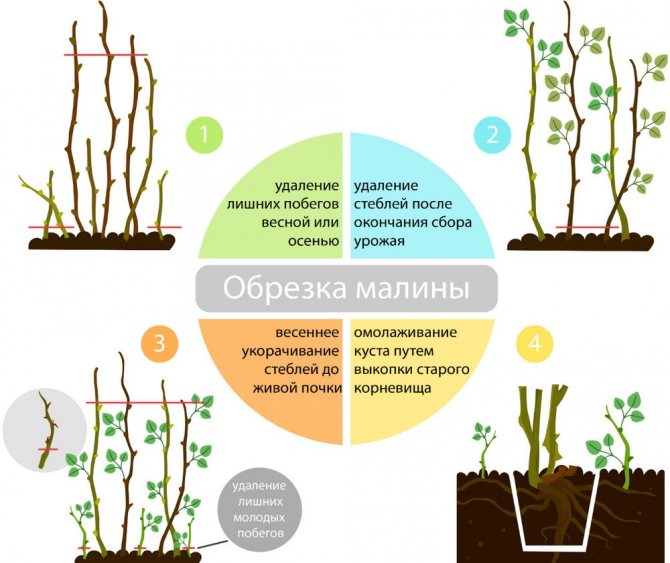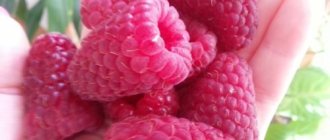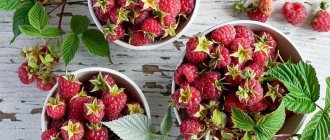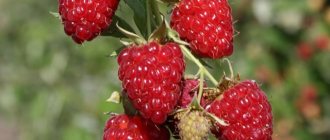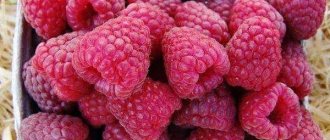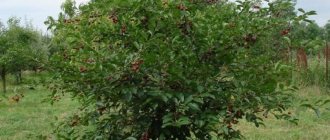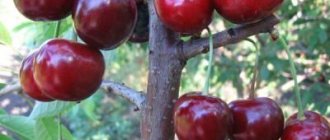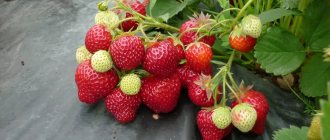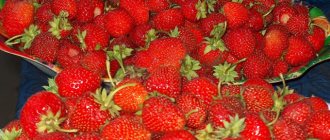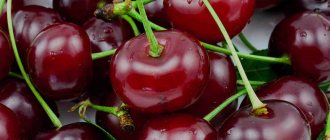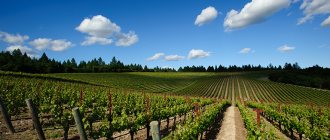Raspberries are a welcome guest in the gardens and orchards of most of the inhabitants of our country. The remontant varieties of this shrub are a gift for those who like to feast on sweet berries and those who are selling, because they bear fruit from mid-summer until the first frosts. Harvesting is especially long in the southern regions. Those wishing to start the cultivation of horticultural crops remontant raspberry the best varieties for the south of Russia are selected taking into account the location of the personal plot and the varietal characteristics of the plant.
Large-fruited raspberry varieties: description, photos, reviews
In terms of taste, this berry is better than ordinary fruits. A distinctive feature of large-fruited varieties is the ability to form branching branches in several rows, which greatly increases the yield. This indicator is influenced by the size of the berries. From one plant, you can collect five to six kilograms per season. According to gardeners, such raspberries have a significant drawback: they react poorly to low temperatures and thaw. A description of the varieties of raspberries with large berries is presented below.
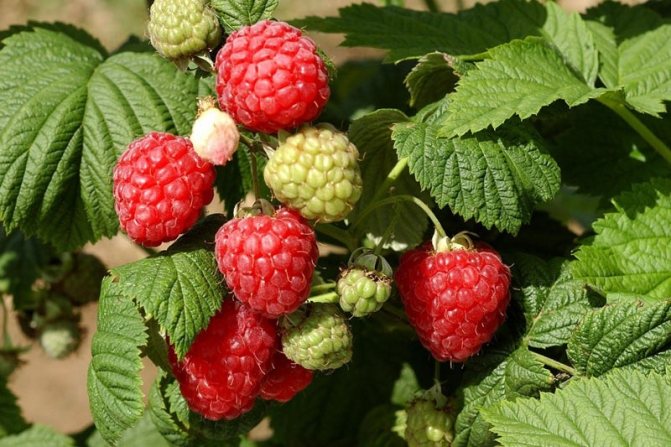
Maravilla
Maravilla is a highly advertised variety at the present time, due to which there is often a re-grading and a large number of seedlings passed off as Maravilla, but are not. The berries are very large, sweet, fragrant, dry with tightly bonded drupes, stored for a long time without loss of quality. The yield is average, when grown according to the principle of a simple summer raspberry, most of the autumn harvest will not have time to ripen. The shedding of berries is noticed with strong gusts of wind, but even on the ground, the fruits are well preserved and do not rot. The bushes are powerful, tall, a distinctive feature of the variety is the reddish-purple coloration of the shoots by autumn.
Detailed description of the Maravilla variety
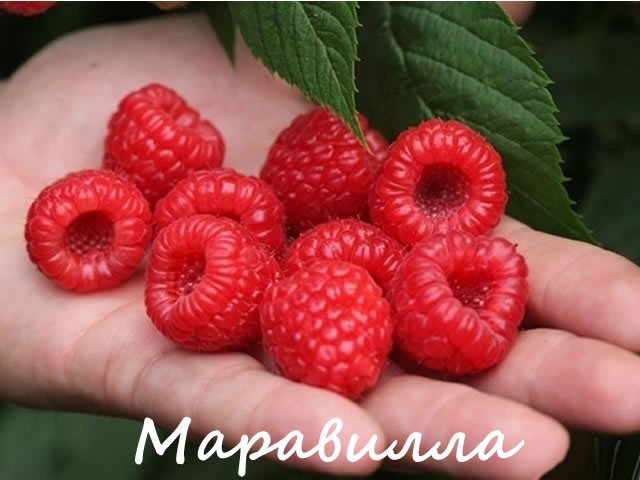

"Glory to Russia"
Raspberries, for the most part, are berry bushes. But this variety is a real "raspberry tree". The culture got this name because of the three-meter trunks. This is a real giant. The raspberry variety "Glory to Russia" is distinguished by its very powerful, without thorns, branches that grow upward and reach one and a half meters. A three-year-old plant is a large bush with up to 10 pieces of fruiting trunks.
Experts believe that if the raspberries are well cared for, 100 kg of berries per hectare can be harvested. They have an elongated shape, bright red color and delicate aroma. The taste is sweet, the seeds are small. The size and weight of the berries is influenced by the year of planting. The older the plant, the more parameters. In one-year-old plants, the length of berries is three to five centimeters, weight - 20 g, in two-year-old plants - six centimeters and 25 g, in three-year plants - seven centimeters and 30 g. "Glory to Russia" is one of the best varieties of raspberries in our country. It has the highest yields and fruit sizes.
Samokhval (Nizhgorodets-2)
Samokhval (Nizhegorodets-2) is a large-fruited variety of raspberries from the Shkolny Sad nursery. The berries are very large (average 8 years, the largest up to 15-18 years), blunt-conical, elongated. The fruit is sweet to taste, but slightly sour than that of the Caramelka variety. Amicable return of the harvest, on each shoot there can be up to 20-30 berries ripened at the same time. The separation of fruits is light, dry. The bushes are powerful, upright, 130-150 cm high.In the parental forms, we have Nizhegorodets raspberry, which is famous for its large fruits and strong bushes, but has a very significant drawback - the technical taste of the fruit. Forms a large number of shoots, is easy to reproduce.
Detailed description of the Samokhval variety


"Pride of Russia"
This hybrid of domestic selection belongs to the mid-early non-remontant varieties of raspberries. Ripening of berries begins at the end of June and continues until the beginning of the next month. Harvesting is carried out five to six times. The last berries are removed in August, closer to the middle of the month. According to experts, all varieties of Russian raspberries described in the article are high-yielding.
The shrub has a powerful root system with 10-12 replacement shoots, which are formed per season. Their length reaches 190 cm. Large-sized corrugated leaves are collected in a rosette, their surface is covered with fluff. Ripe berries have a red color, but not bright. They are large, average weight - 8-12 g, sometimes much more - up to 20. Their shape is conical, the tip is blunt, the surface is bumpy. If the weather is bad during the ripening period, they can be doubled. The yield is high, five to six kilograms of raspberries are harvested from the bush.


The juicy pulp has a delicate texture and sweet and sour taste. Drupes have a tight fit to each other, so the berries do not flow during harvesting, they are easy to remove, but they do not tolerate transportation over long distances. The shelf life of berries is short, only two days.
According to reviews, the raspberry variety, the photo of which is presented above, is adapted to the harsh winters of the Russian climate. He is not afraid of severe frosts. But experienced gardeners recommend not to risk it and in late autumn to bend the shoots to the ground, and the snow that has fallen will be a shelter for them. Raspberries are not baked in extreme heat and do not become smaller from this. The variety is resistant to diseases of the species, this is due to genetics.
Landing: step by step instructions
It is advisable to buy seedlings from a proven nursery. They can be planted from spring to autumn. In regions with cold winters and severe frosts, only spring planting is permissible.
Important! Raspberries can be crossed with other berries to form new species.
Classic way of planting:
- Dig holes up to 40 cm deep and 30–40 cm wide. The distance between them is about 45 cm. The distance between the rows is 100–120 cm.
- Mix the excavated soil with compost or rotted manure.
- Soak roots in a growth promoter before planting.
- Place the plants in the holes. Cover with soil mixed with organic fertilizers and water.
- Tie the plants to the trellis with a piece of soft cloth.
- Cut off the tops (about 20 cm) immediately after planting to stimulate new growth.
Video: planting raspberries in spring
"Ruby Giant"
This crop is one of the many varieties of raspberries. Photos and descriptions are presented below. The repaired variety appeared recently thanks to the efforts of breeders from Moscow. It has its own varieties depending on the color of the berries. The bushes have an average height of 160-180 cm. Their stems do not have thorns, which makes harvesting easier. They are not erect, but inclined, hanging slightly downward.
Fruiting is extended in time: it begins in July, ends in September. This variety has a high cold resistance. According to gardeners who have been cultivating raspberries for many years, the roots can withstand thirty-degree frosts without any shelter. The culture belongs to unpretentious raspberry varieties. It grows in soil of any composition, it is not afraid of the peculiarities of the climate in any region. It is rarely affected by infections and damaged by pests.
The berries are very large. In fruits, the shape is elongated, in the form of a truncated cone, the color is ruby or bright red. The berries are sweet and sour, with a pleasant refreshing taste and a pronounced raspberry aroma.They have a dense consistency, do not knead during collection, and are well transported. The fruits have a universal purpose: they are used fresh and frozen, they are used to prepare jam, jam, compote.
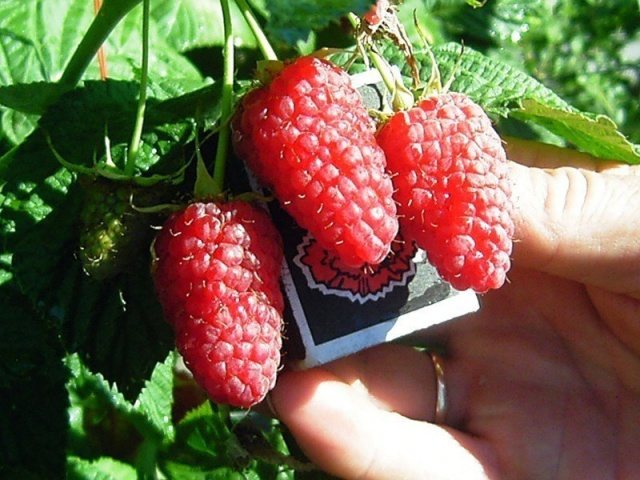

Shine
Shine is a new variety from the Research Institute of Horticulture of Siberia named after V.I. M.A. Lisavenko. It is an improved version of the Sokolenok variety, recommended for cultivation in the Urals, Siberia, and the Far East. Bushes of medium height (1.5-1.7 m.), Upright, slightly spreading. Shoots are completely devoid of thorns, slightly geniculate in structure, flexible, light brown in color (by the end of the season, the color changes to purple). Leaves of medium size, smooth, consist of 3-5 leaves, the outermost of which is slightly twisted. Berries of medium size (2.5-3.5 g), roundish, red. Drupes are uniform, medium in size, well bonded to each other. Berries do not crumble, dense, transportable. Productivity is high: 7-8 t / ha. The yield is amicable and takes 3-4 waves. Resistance to frost is high, does not require bending or additional cover.
Detailed description of the variety Glitter
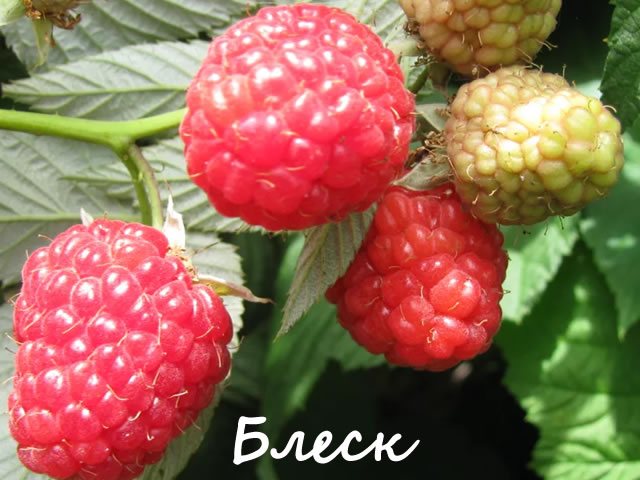

Thank you for reading this article to the end! We tried to present to your attention as many promising novelties from Russian breeders as possible (School garden, Research Institute of Horticulture named after M.A.Lisavenko and I.V. Michurin, Academy of Bryansk), but we didn’t forget about successful foreign experience. New varieties from Poland, France, the USA can be successfully cultivated by Russian gardeners and give no less yield than in their homeland. We also advise you to pay attention to our analytical material dedicated to the best varieties of raspberries as of 2020. The material contains the most popular and promising varieties that undoubtedly deserve your attention.
"Yellow giant"
This culture belongs to domestic varieties of raspberries with berries of unusual color. During fruiting, the bushes are sprinkled with yellow fruits, it looks very beautiful. The berries stay on the bushes for a long time, this is especially true when summer residents are very busy, who do not have time to harvest every day. Housewives advise to use this berry fresh, since during processing it loses its shape, wrinkles, and lets out juice. According to their reviews, you can freeze raspberries, while the taste and useful properties are preserved, but the shape is not.
The culture belongs to the tall varieties of raspberries. The height of powerful bushes with spreading stems and developed roots reaches two meters. On fruit branches, 20 or more berries are formed. They are not the same in size, they are medium and large. Conical or elongated with a rounded tip. The color of the berries is yellow, but by the period of full ripening it becomes amber. Of all the varieties of raspberries, described in this article, yellow berries are the most delicious, fragrant and sweet. They have a subtle aftertaste.
The first crop is harvested in July, at the beginning of the month, the last in mid-August. However, experienced gardeners have noticed that this raspberry also bears fruit in September. Plants can withstand slight frosts. To endure the winter with severe cold, you need to prepare the bushes, for which you should bend the shoots to the ground. Snow will fall and cover them.
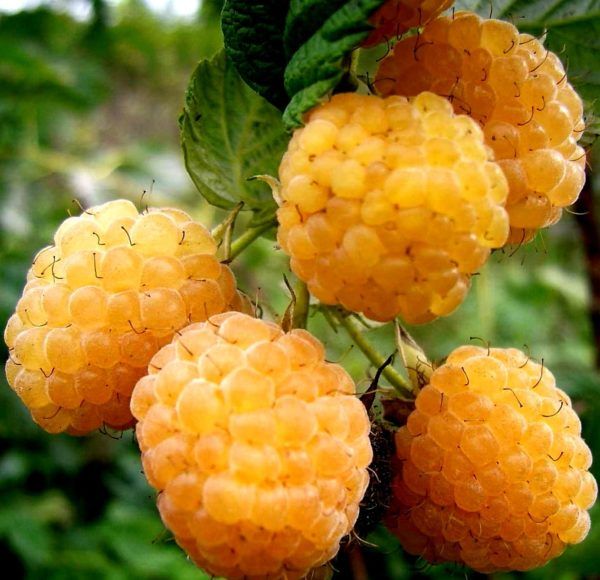

Landing options
The bushes are planted with a distance of 50–70 cm between them. The root system of the plants brought from the nursery is pre-soaked in warm water for 1 hour to allow the roots to be saturated with moisture. Then they dig trenches with a distance of 100–120 cm between them or prepare planting holes. For mechanized planting, planters SSHN3 (SLN1) are used, which are attached to a tractor or walk-behind tractor. In this case, the distance between the rows depends on how much distance is needed for convenient maintenance of the plantation with mechanisms. Roughly it can be a scheme of 2.0 (3.0) × 0.25 (0.5) m.


The mixture taken out of the trench is mixed with organic fertilizers: compost or rotted manure.You can also use balanced mineral fertilizers.
Did you know? In Christianity, raspberries are a symbol of kindness. The red juice of the berries has been compared to the blood that flows through the heart, which contains kindness.
A mound is made of organic matter mixed with the soil, into which the bushes are planted. Water the raspberries immediately after planting. Use a mulch layer to cover the soil around the plants. Mulch protects the soil from drying out, prevents the growth of weeds. Mulch layer - 3 cm. Sawdust, wood chips, straw, cut corn heads are used as a mulching layer. It is not recommended to mulch with grass - it promotes the growth of weeds.


"Morning dew"
This variety was bred by breeders from Poland. The appearance of large berries is very beautiful. The value of the crop lies in its high yield, excellent fruit quality and good transportability. The bush grows up to one and a half meters, its shoots have hard thorns and are small in size. Fruiting occurs in their upper half. If you look at the bush, it seems to be covered with berries.
Raspberry belongs to remontant varieties. The first ripening of fruits occurs at the end of June, then in mid-August and before the onset of frost. The berries are round in shape and have good density, weighing up to 10 g. They are sweet to taste, with a slight sourness. If the berries ripen in hot weather, they become sour. With timely watering, they are sweet.
About product sales
The distribution of berries should be of primary concern to a novice raspberry grower. Since this is one of the most perishable berries, it will be optimal to sell it directly on the day of harvest. Therefore, the search for potential buyers should be attended to in advance. If you grow raspberries in small quantities, you can partner with other farmers to make common supplies.
If you grow raspberries in greenhouses all year round, or you grow special varieties that are not on the mass market, then restaurants that will be happy to find a source of quality berries for their needs can become your regular customers.
In any case, in this business it is necessary to look for clients in advance, and this factor is much more important with raspberries than with any other agricultural product.
"Balm"
This variety is popular with gardeners, they have been growing it for 30 years and are very happy. They are attracted by unpretentiousness in care and taste, it resembles wild berries. In addition, the variety has high productivity, resistance to any climatic conditions and frost.
This raspberry is quite tall, its shoots grow up to 180 cm. The thorns rarely cover the surface of the stems, but they are tough. The berries have a crimson color, they are matte, it seems that their surface has some kind of dusting. They weigh a little more than three grams, are dense, therefore they retain their presentation during transportation.
"Eurasia"
This variety is late ripening. The berries ripen with the onset of August, their last collection falls in mid-September. The bush is quite high, one and a half meters, its shoots are directed upwards. The plant looks like a tree in shape. Biennial bushes form up to five to six shoots. There are many thorns at the base, in the upper part of the stems they are almost absent.


This variety is unpretentious, does not require special care. The berry has a sweet taste with a slight acidity. The yield is average, about three kilograms. But if you periodically feed the plants with fertilizers, this figure doubles. For a plant, the composition of the soil and the climate do not matter. It grows well in any conditions. Bears fruit once a season, but abundantly.
Antares
Antares is a late-ripening summer raspberry variety from the Sverdlovsk Horticultural Selection Station.Differs in high winter hardiness (does not require autumn bending of shoots), excellent yield (about 9 t / ha with minimal maintenance), large fruits (4-4.5 g), drought resistance. It has the maximum resistance to anthracnose, is practically not affected by septoria, purple spot, raspberry beetle. The berries are conical in shape, red with a slight sheen, sweet and sour to taste, aromatic. Drupes are homogeneous, well adhered to each other. Fruits are dense, transportable. Tasting assessment of berries 4.3 points. The bushes are powerful, with an average height of 1.8 m, slightly spreading. The shoots' studding is average. Thorns of purple color, medium size and hardness, located along the entire length of the shoot. Annual stems are red, erect, with a slight waxy bloom. Biennial shoots are brown. Shoot-forming ability is average. During the season, 5-7 replacement shoots and 2-3 basal layers are formed.
Detailed description of the Antares variety
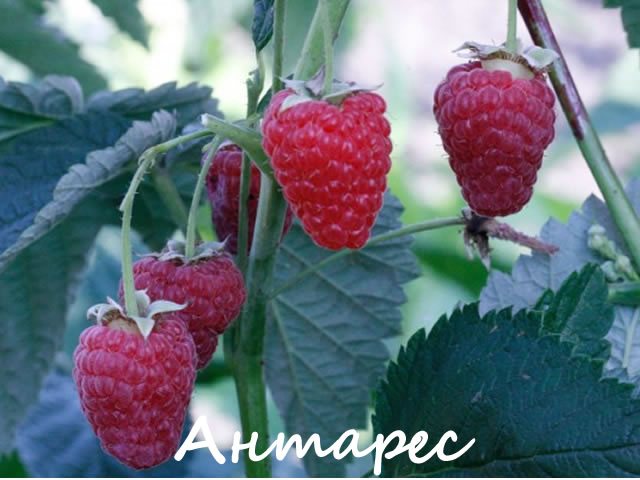

"Maroseyka"
This raspberry is the first variety to have thornless shoots. Basically, the culture is grown by amateur gardeners in their dachas. They note that raspberries are unpretentious in their care, they give good yields of tasty and large berries. And experts note that in some years, when fertilizing, you can collect six kilograms of berries from a bush. It is not suitable for industrial cultivation, as it does not tolerate both cold and drought. This is due to the fact that the roots occur close to the surface of the soil, so in winter they freeze over, in summer they get very hot.
The bush is spreading, its height is one and a half meters. There are many shoots, there are no thorns on them, but there is a felt coating. The branches with fruits are arranged in several rows, usually from two to five. The elongated berries are large, weighing up to 12 g each, and hold tightly to the branches. Due to the dense pulp, they are well tolerated over long distances.
Stamp
Standard raspberry varieties are bred specifically to facilitate harvesting. Unlike classic varieties, standard varieties start up one or only a few low shoots, which are easy to care for and set the desired growth vector.
Standard varieties are almost always high-yielding, but whimsical to care for.
Galaxy
The most famous standard variety that bears fruit with strong and large berries.
Perhaps the only disadvantage of the variety will be the poor tolerance of the transportation of fruits and the short shelf life of the harvested crop.
Sturdy
Standard variety, with medium ripening of berries (usually in the middle of summer).
Fruiting can be until the end of autumn.
For Russia, one can appreciate such qualities as the frost resistance of "Krepysh" and a fairly strong immunity.
Story
Suitable for connoisseurs of mid-season varieties.
The main feature of the Skazka raspberry is the highest yield - you can harvest up to 12 kg from each bush.
Moreover, the harvested crop lies well and does not deteriorate during transportation.
Early varieties
Such raspberries are harvested at the end of spring, when vegetables and many other berries are not yet ripe. Therefore, this crop is often grown for commercial purposes. Early raspberries are expensive, but people buy them because everyone needs vitamins. Some raspberry varieties with descriptions and reviews are given below:
- "Patricia" is a tall plant, it grows up to two meters, but it does not need support. The bush is strong, it can grow five kilograms of berries, 12 g each. They are sweet and very aromatic. According to consumer reviews, the variety is considered dessert. The fruits are good fresh and canned. Disease resistance is average, but high frost resistance.
- "Hussar". This raspberry variety requires little maintenance. He doesn't need support, no garter. It is frost and drought resistant. Differs in high fruiting.According to gardeners, four kilograms of medium-sized berries can be harvested from a plant. The approximate weight of the fruit is five grams.
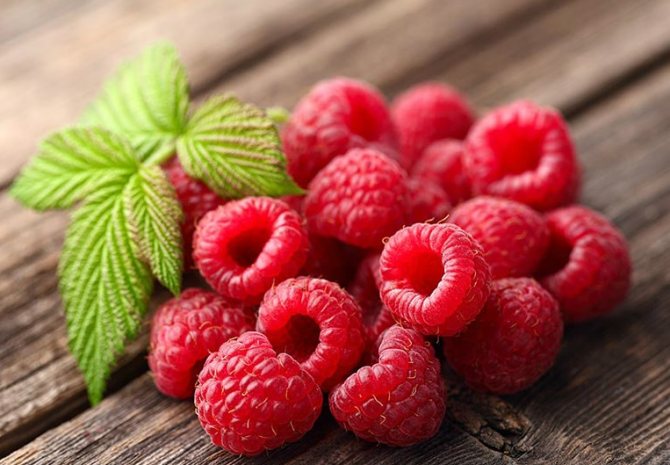

Medium ripening varieties
This raspberry is grown for the preparation of mousses, jams, preserves, since the dry matter in the berries is contained in large quantities. The fruits begin to ripen after the early varieties are harvested. Raspberry varieties with reviews are presented below:
- "Phenomenon". According to experts, this variety is convenient for cultivation, since it is not afraid of the vagaries of the weather, it tolerates frost and heat, grows on any soil, and does not require special care. The berries ripen in the second half of the first month of summer. They are deep red in color, large in size, do not crumble from the branches. Nevertheless, they need to be collected on time, according to experienced gardeners. If overripe, taste changes for the worse. The berries are stored in the refrigerator so that they do not quickly let the juice out. If packaged properly, it can be transported over long distances. Berries are eaten fresh, frozen, jam and compotes are made from them.
- "Cap of Monomakh". Despite the large size of the bushes, they do not need a garter. The berries are unaligned, medium-sized ones weigh eight grams, large ones - 18. The yield is quite high - eight kilograms of fruits from a bush.
Late varieties
The peculiarity of such raspberries is the preservation of inflorescences after spring frosts, which often occur at this time. The flowering period begins in the summer, the berries ripen in the fall, closer to the middle:
- "Tarusa" is a crop demanding to care, the yield of the variety is record only with timely watering and top dressing. One shoot gives a kilogram of berries, and a plant has up to 10 or more of them. The yield is accompanied by the weight of the fruit, 18 g each. Ripe berry picking begins in August. They are eaten fresh, they are suitable for any berry preparations, sweet to taste, with a slight sourness. This variety grows in one place for 15 years, so when planting, you need to immediately select a convenient place. "Tarusa" tolerates frost, but for safety reasons it is better to cover the shoots for the winter, as gardeners believe. To do this, they propose to use branches of needles, which will then be covered with snow.
- Cumberland. This variety is interesting for the color of its berries: it is red and black-gray. They taste the same as other fruits. Used for the preparation of jelly, mastic, jelly and other blanks. Berries are a natural, harmless colorant. The variety does not tolerate drought, therefore timely watering is important for it. Plants have fragile immunity. It is affected by diseases of the species and damaged by pests. If the plants are left without watering during the period of growth and fruit formation, a good harvest may not be expected. But with normal care, according to gardeners, you can collect eight kilograms of berries from a bush.
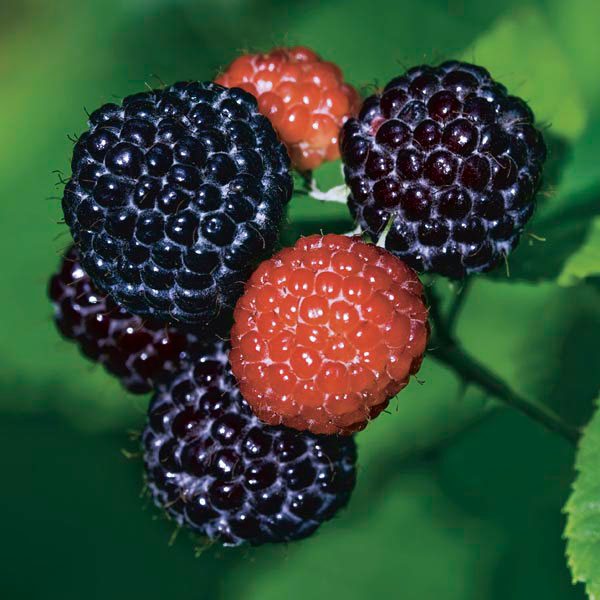

Raspberry of the best remontant varieties
What it is? Repaired crops are crops that bear fruit repeatedly during one season. Fruiting continues until frost. For example, here are some of the best varieties of such raspberries:
- "Orange miracle". The color of the berries corresponds to the name. The average weight of fruits is 12 g. They are sweet, with a pronounced raspberry aroma. If provided with the correct packaging during transportation, the juice will not be allowed. This raspberry tolerates cold well, but if grown in the northern regions, it is better to cover for the winter.
- "Bryansk Marvel". Diseases and pests do not cause problems, since the culture is not sick or damaged by them. The crop is harvested twice a season: in July and in September. The berries are medium in size, about six grams each. During processing and freezing, it retains its original qualities. It tolerates frost persistently, so experts recommend growing this variety in cold climates.
These are just some of the best varieties of raspberries, according to reviews of domestic gardeners.

